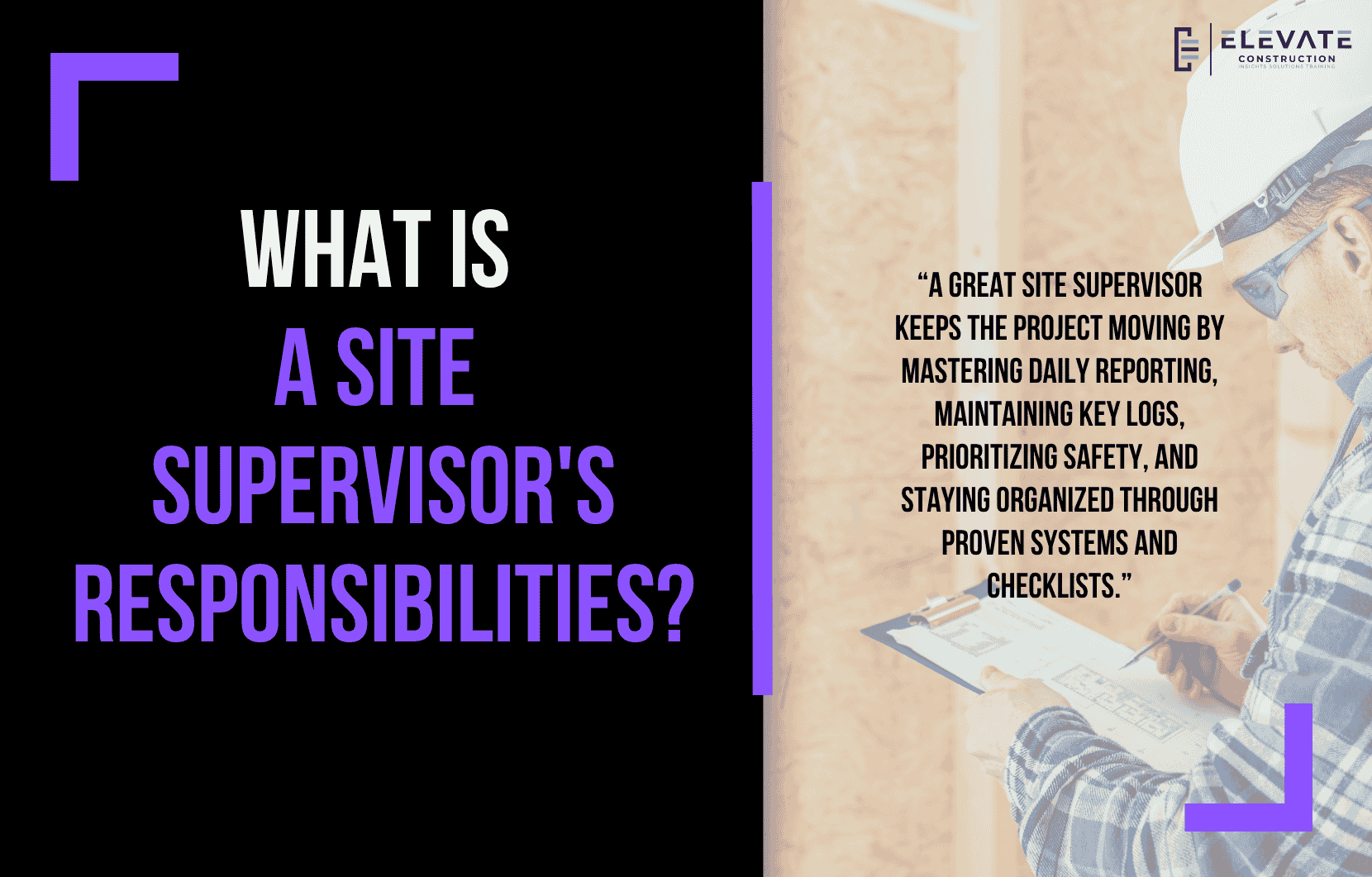What Are a Site Supervisor’s Responsibilities?
If you’re stepping into the role of a Site Supervisor, congratulations, you’re taking on one of the most important positions on a construction project. This blog dives into your core responsibilities and the key systems you need to manage to run an efficient, safe, and organized site.
Daily Reports
As a Site Supervisor, you’re responsible for completing daily reports or logs. These should document weather, site conditions, delays, issues, and general progress. With today’s technology and AI tools, documenting is easier than ever but accuracy and attention to detail are still crucial.
A helpful habit: take plenty of photos throughout the day to maintain a clear record of progress and conditions.
Essential Logs to Maintain
Beyond daily reports, you’ll also need to track a few critical project logs:
- Trade Partner Preparation / Quality Logs (buyout, preconstruction meetings, inspections).
- Submittal or Procurement Logs (to manage material deliveries and supply chains).
- Testing and Inspection Logs (to ensure compliance and performance checks).
- Risk and Opportunity Registers (to identify, track, and mitigate potential issues).
- Roadblock Tracker (to spot and resolve problems quickly arguably your most important log).
Additionally, make time for regular field walks, reviewing drawings, and updating your schedule or production plan.
Safety, Scheduling & Compliance
Your two biggest priorities as a Site Supervisor? Safety and rhythm.
Safety means ensuring compliance with all site rules, cleanliness, and organization.
Rhythm means keeping every crew aligned with the schedule so the project flows smoothly.
These two elements shape your site’s environment and your leadership.
What If You Miss a Report or Hazard?
Occasionally missing a report for good reason isn’t catastrophic, but consistency matters. You should never miss daily reports or fail to document safety hazards. If it happens and you’re genuinely doing your best, ask your team for support but always treat safety as your first priority.
Stakeholder Management
Depending on the project, you’ll also have some level of client and stakeholder interaction. Be approachable, professional, and collaborative, you represent your company every time you step on site.
Systems and Templates
To stay organized, use proven systems and checklists. I recommend the following resources:
- Elevating Construction Superintendents.
- Elevating Construction Senior Superintendents.
- Elevating Pre-Construction Planning.
These guides outline the minimum base systems and daily habits that help Site Supervisors excel.
Key Takeaway
A great Site Supervisor keeps the project moving by mastering daily reporting, maintaining key logs, prioritizing safety, and staying organized through proven systems and checklists. Consistency and communication are what turn good supervision into great leadership.
If you want to learn more we have:
-Takt Virtual Training: (Click here)
-Check out our Youtube channel for more info: (Click here)
-Listen to the Elevate Construction podcast: (Click here)
-Check out our training programs and certifications: (Click here)
-The Takt Book: (Click here)
Discover Jason’s Expertise:
Meet Jason Schroeder, the driving force behind Elevate Construction IST. As the company’s owner and principal consultant, he’s dedicated to taking construction to new heights. With a wealth of industry experience, he’s crafted the Field Engineer Boot Camp and Superintendent Boot Camp – intensive training programs engineered to cultivate top-tier leaders capable of steering their teams towards success. Jason’s vision? To expand his training initiatives across the nation, empowering construction firms to soar to unprecedented levels of excellence.
On we go

